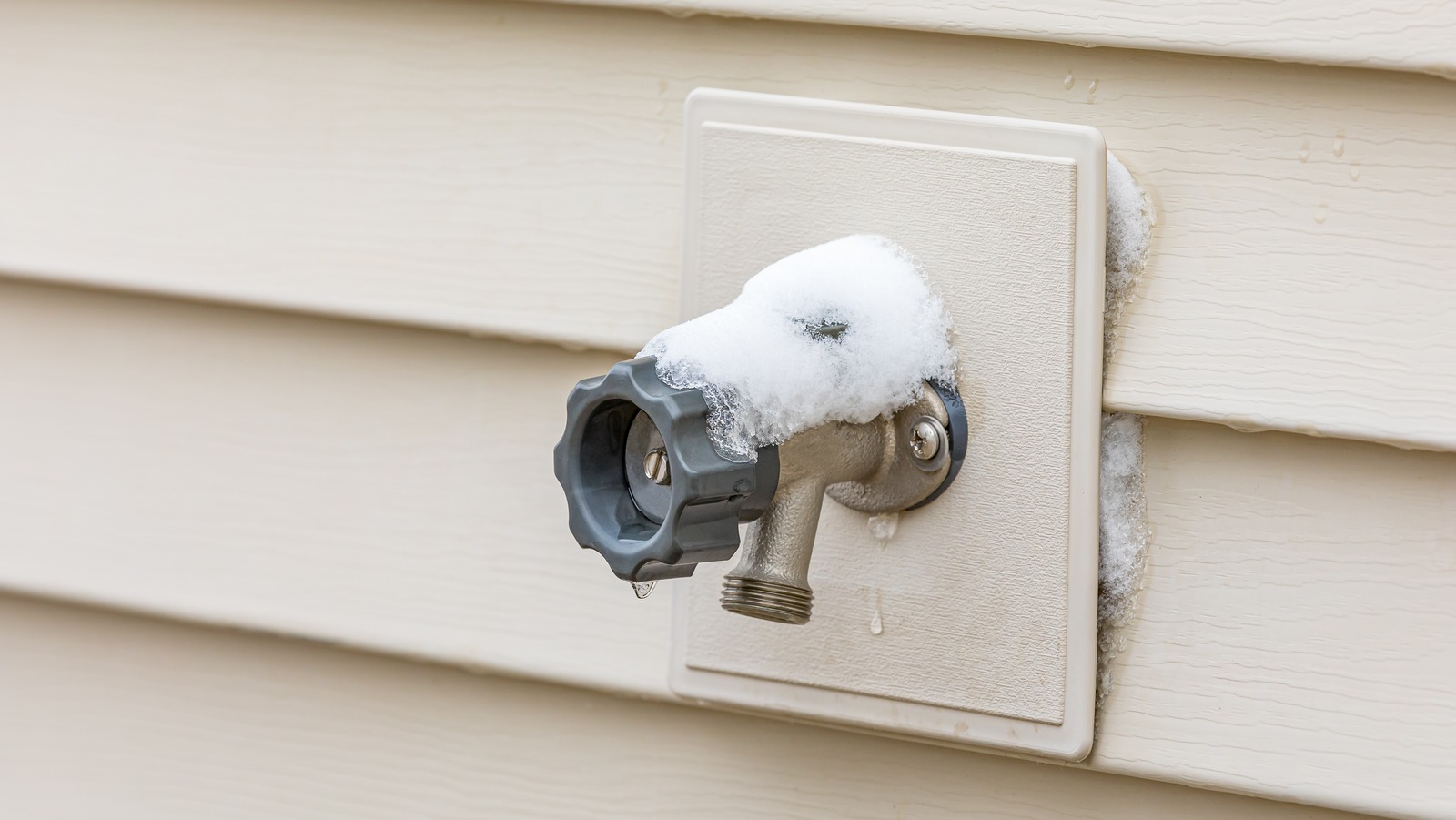
The Best Way To Protect Your Outside Faucet From Freezing In Winter
Try and open faucets around the home after you've closed the main valve to check if you've successfully shut down the water supply. Open the faucet on the highest level of the home to relieve pressure. 4. Open the outside faucet until it runs dry. Keep an eye on the outside faucet for a while after you've opened it.

How to Keep Outdoor Faucet From Freezing YouTube
Turn off the water. The next proactive thing to do is to shut off the water. To do this, start by locating the control valve on the water supply pipe leading to the outdoor spigot. In most cases.
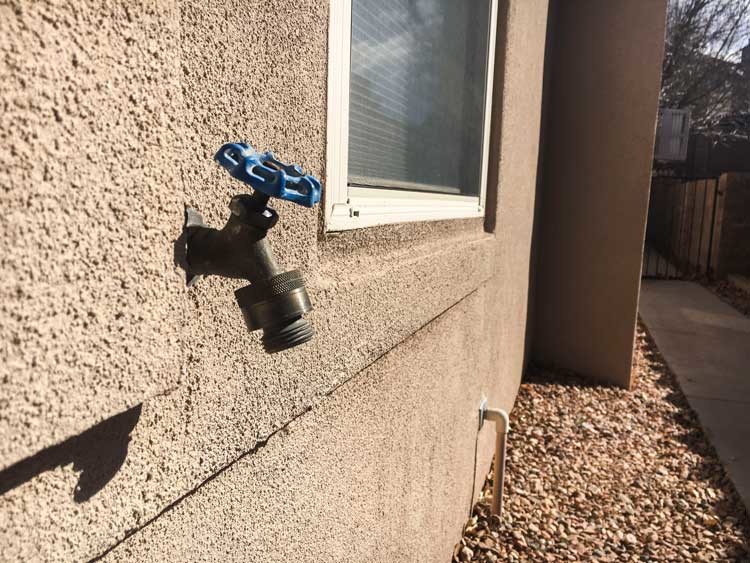
Tips To Prevent Frozen Outdoor Faucets in NM TLC Plumbing
Inspect the Spigots. The next step to winterizing outdoor faucets is leak detection and repair. Check all spigots, yard hydrants, and other fixtures for leaks and drips. If you do find any problems, repair or replace the fixture before the temperature drops to freezing. Dripping water indicates a spigot with a leaky washer or cartridge, which.
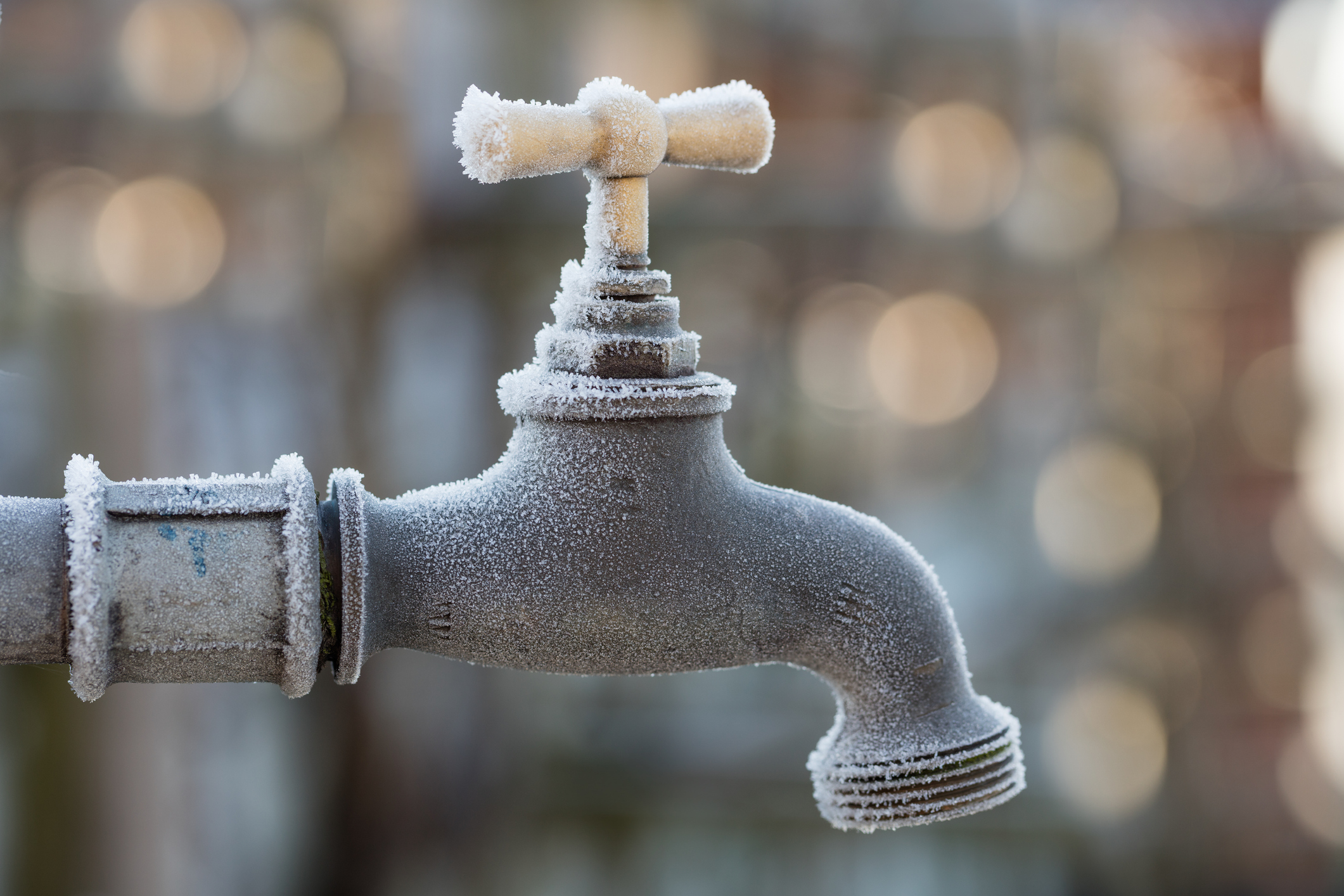
How to protect an outside faucet from freezing in winter Homes & Gardens
Shut the water off by turning the outside spigot (or main valve if a separate one is absent) clockwise. Go outside, and turn the spigot or sillcock to drain whatever water is left. Go back inside and remove the caps from the pipes leading to the faucets to drain the remaining water from the pipes. Replace the caps.
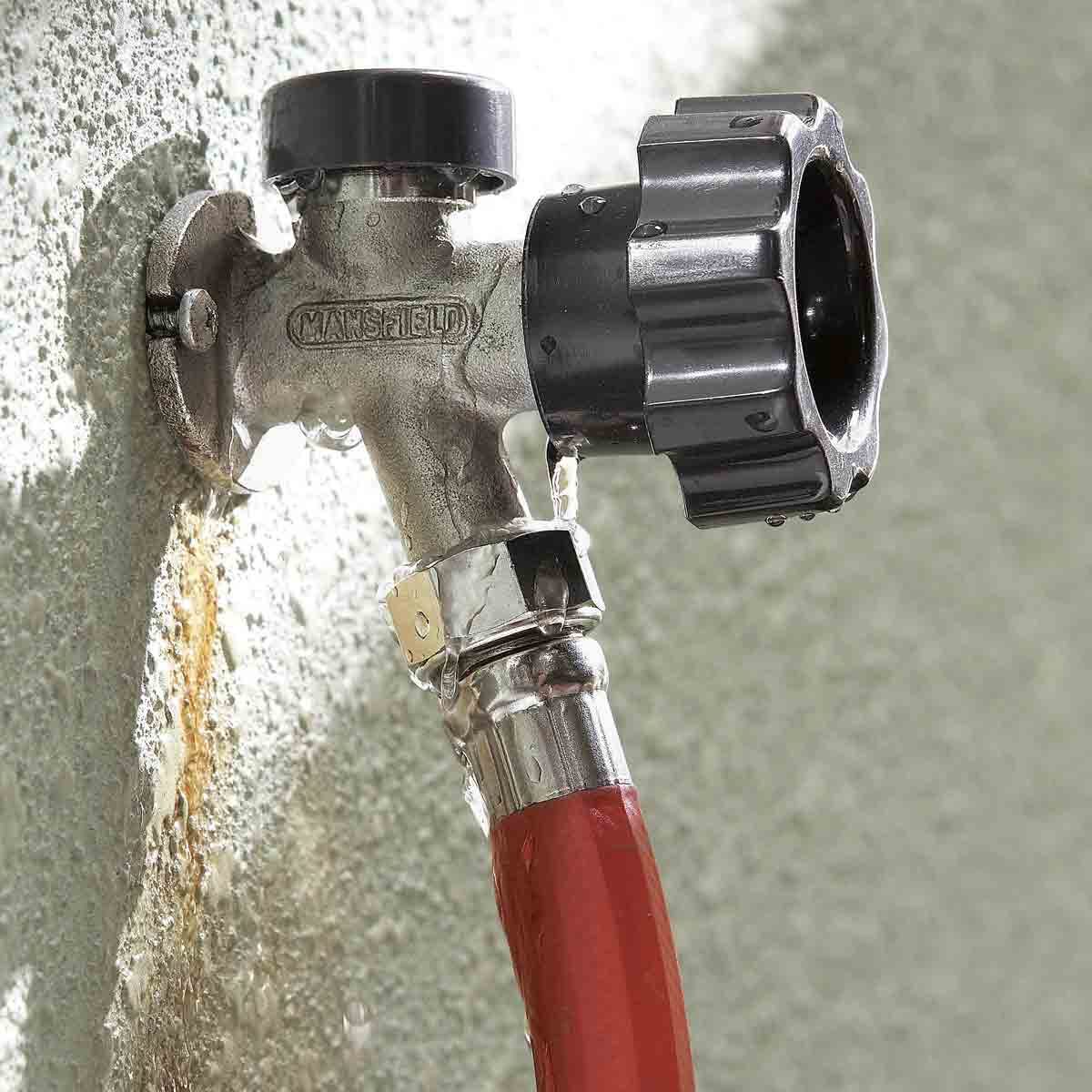
How to Fix a Leaking FrostProof Faucet (DIY) Family Handyman
Shut off and Drain the Water. Turn off the water to the supply pipe leading to the outdoor spigot. If the water pipe does not have its own control valve, you must turn off the water to the entire house, using the home's main shutoff valve. Open the outdoor spigot and drain the remaining water from the supply pipe. The Spruce / Sarah Lee.

How to Prevent Outdoor Faucets from Freezing Ann Inspired
2. Drain the faucet. Once you've shut off the supply, open the faucet to let water drain out and air flow in. This air supply will ensure that any water that does remain in the faucet after it's been shut off has room to expand. 3. Insulate the outside faucet. Of course, not all homes have an isolation valve for the outside tap; many older.

How to Keep an Outdoor Faucet or Spigot From Freezing
First, start off by removing any hoses, as stated earlier, then use the t-shirts or rags to wrap around the faucet and pipework several times and as tight as possible. Once that is done, use the plastic bags to cover the fabric. Finally, rip off a few pieces of tape to wrap around the bags a few times until they are tightly closed.
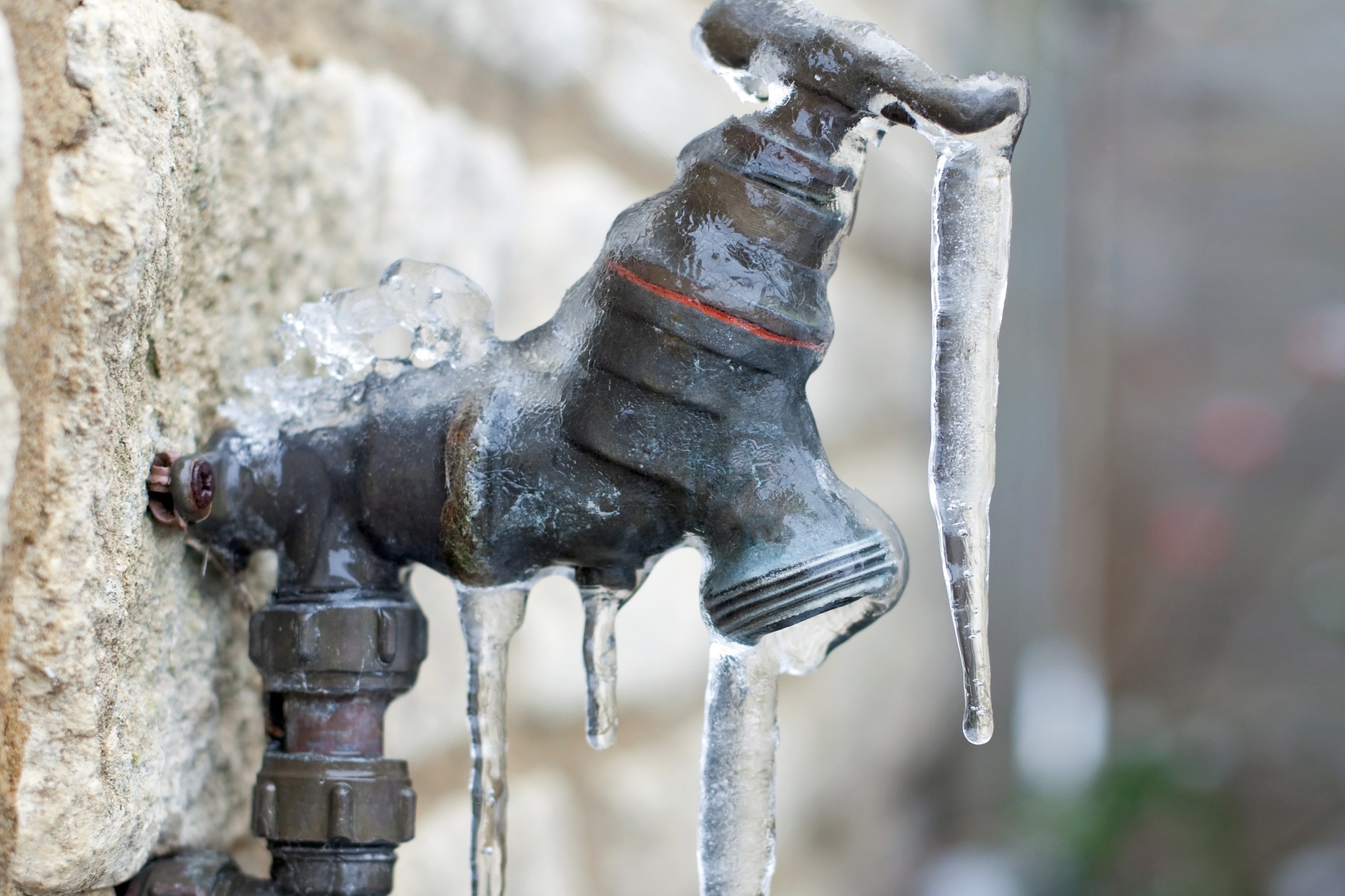
How to Keep Pipes From Freezing Stop Pipes From Freezing
Turn Off Valves. Outdoor faucets are controlled by shut-off valves located in the house. To prevent water from getting into the outdoor fixtures in the winter, you should utilize the shut-off valves. After doing that, drain the faucet. After turning off the valve, open the spigot and leave it that way for a few hours. Then close it.

How To Keep Outside Faucet From Freezing Ask the Plumber Blog
Shut off the upstream water supply valve feeding the outdoor faucet. Typically, you will find this valve several feet from the outside wall. Turn the handle to the valve in a clockwise motion until it stops. If it has a lever handle, turn the lever until it is perpendicular to the pipe. Drain any residual water from the faucet and pipe.
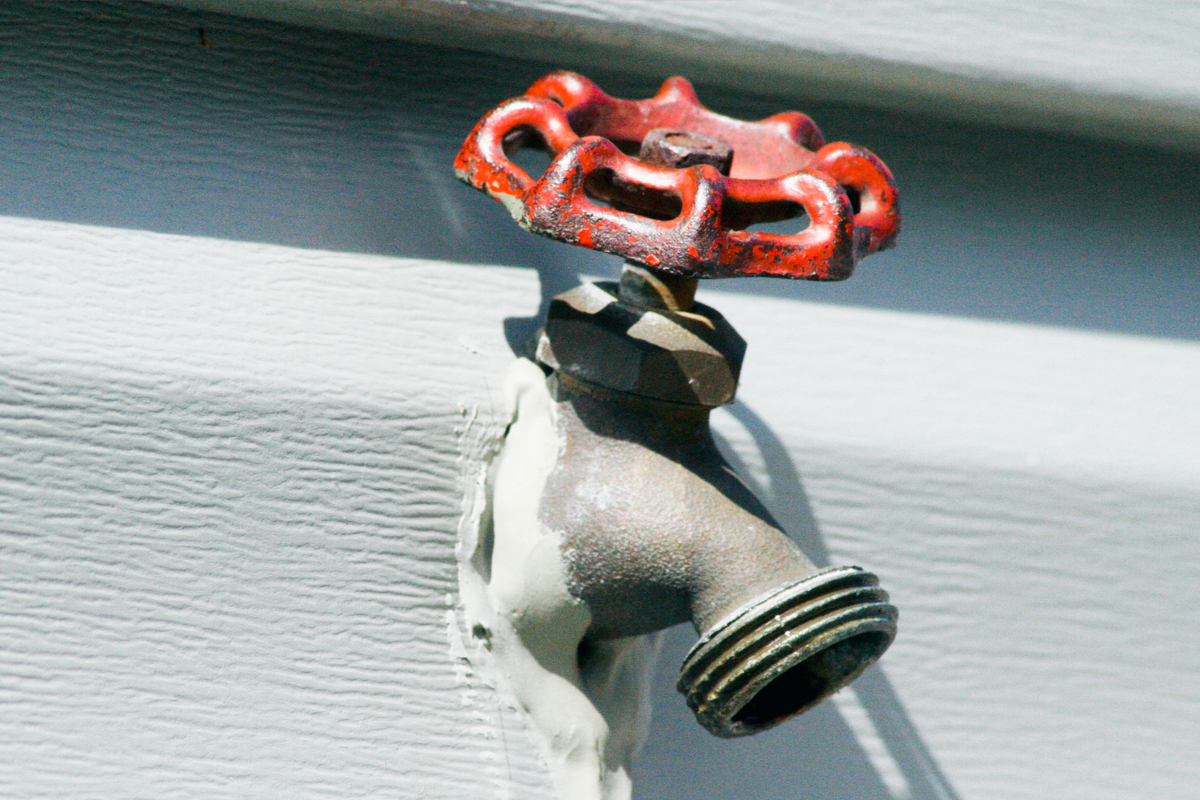
How To Winterize Your Exterior Faucets
The best ways to protect your outside faucets from freezing include: Using A Winter-Proof Faucet. Install a Freeze Miser. Use a Winter Faucet Cover Insulator. Turn Off the Water. Use a Heating Cable.

What is an Outdoor Freeze Proof Faucet, and How Does It Work? Phyxter
Protecting an outside faucet from freezing in winter is one of the best ways to help mitigate damage caused by burst pipes. If you can't let an outdoor faucet drip to prevent freezing or turn the water supply off at the mains, then covering an outside faucet is your next course of action to help protect your waterlines in winter.. As big freezes are expected to hit parts of the country.

How to install a frost proof faucet outdoors Artofit
Drain any residual water from the faucet and pipe: After shutting off the water flow, run the faucet to get rid of any water still in the pipe. Install an outdoor faucet protector: A foam faucet cover adds a layer of insulation between the freezing air and the water in your pipes. You can find these covers in hardware stores or online.

How To Freeze Proof Outdoor Faucet All A's Plumbing
PRE-WINTER DRAINING. The easiest and cheapest way to prevent freezing in your pipes is to drain the lines prior to the first freeze each winter. To do this, you'll need to locate the valve that controls water flow to your outside faucets, which is usually located in the basement, and switch it off. Then open each outside faucet completely and.
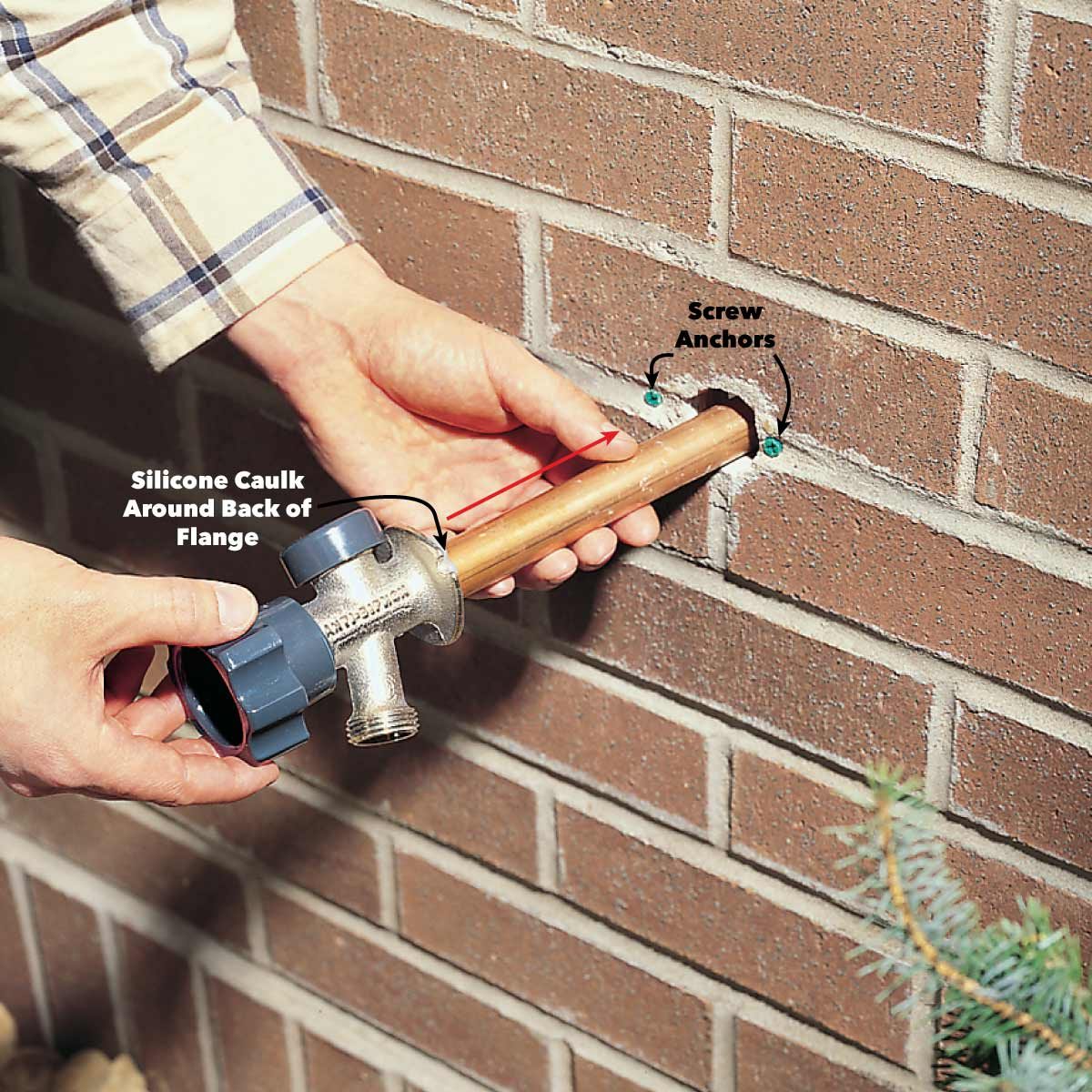
How To Install A Frost Proof Outdoor Faucet — The Family Handyman
3. Drain the Water. With the hose safely drained and stowed, you can then drain the water from the outdoor faucet. Turn the bleeder cap, if there is one, until the water is completely drained and replace the bleeder cap. Capture the runoff in a bucket so it doesn't form an ice patch beneath your faucet. 4.
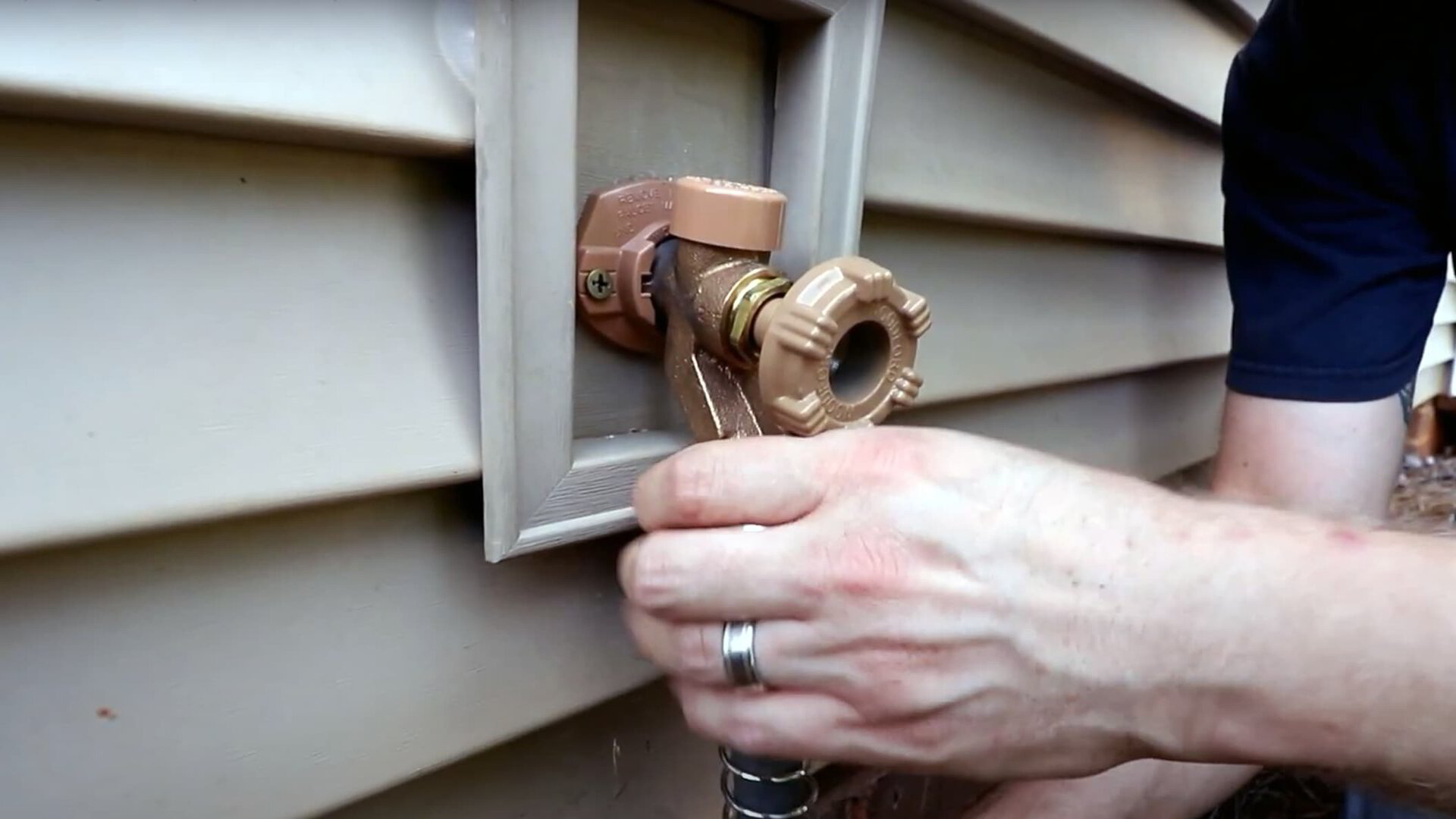
What is a Freeze Proof Outdoor Faucet and How Does It Work? Phyxter
1. Keep your outdoor faucet open. It's crucial that, as the faucet and pipes thaw out, the water and steam that you create during the process have a point of release. Otherwise, you'll cause one of your pipes to burst. In addition, having a flow of water as the ice melts will also help to expedite the entire process.
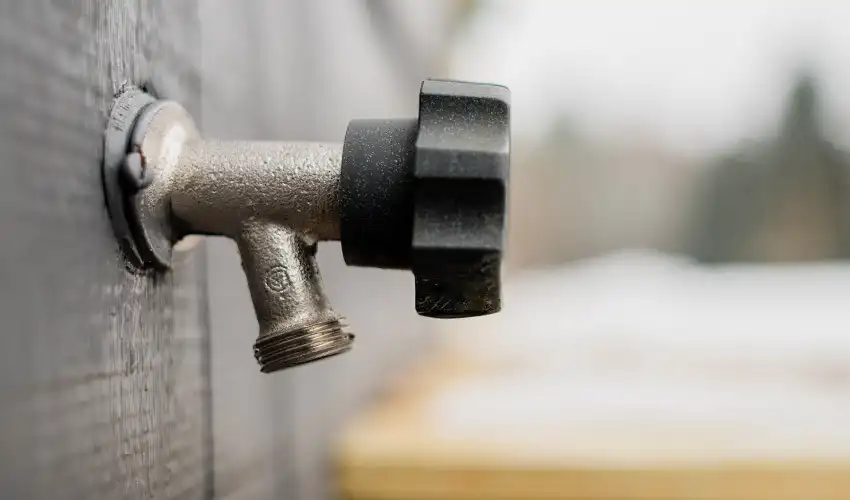
How to Protect Outdoor Faucets from Freezing in the Winter
Leaving an outdoor faucet dripping in winter can prevent freezing throughout winter as running water is a lot less likely to freeze than stagnant. 'Moving water has a slightly lower freezing point than still water, making it less susceptible to freezing at the same temperature,' explains Jay. A dripping faucet can also prevent water pressure.